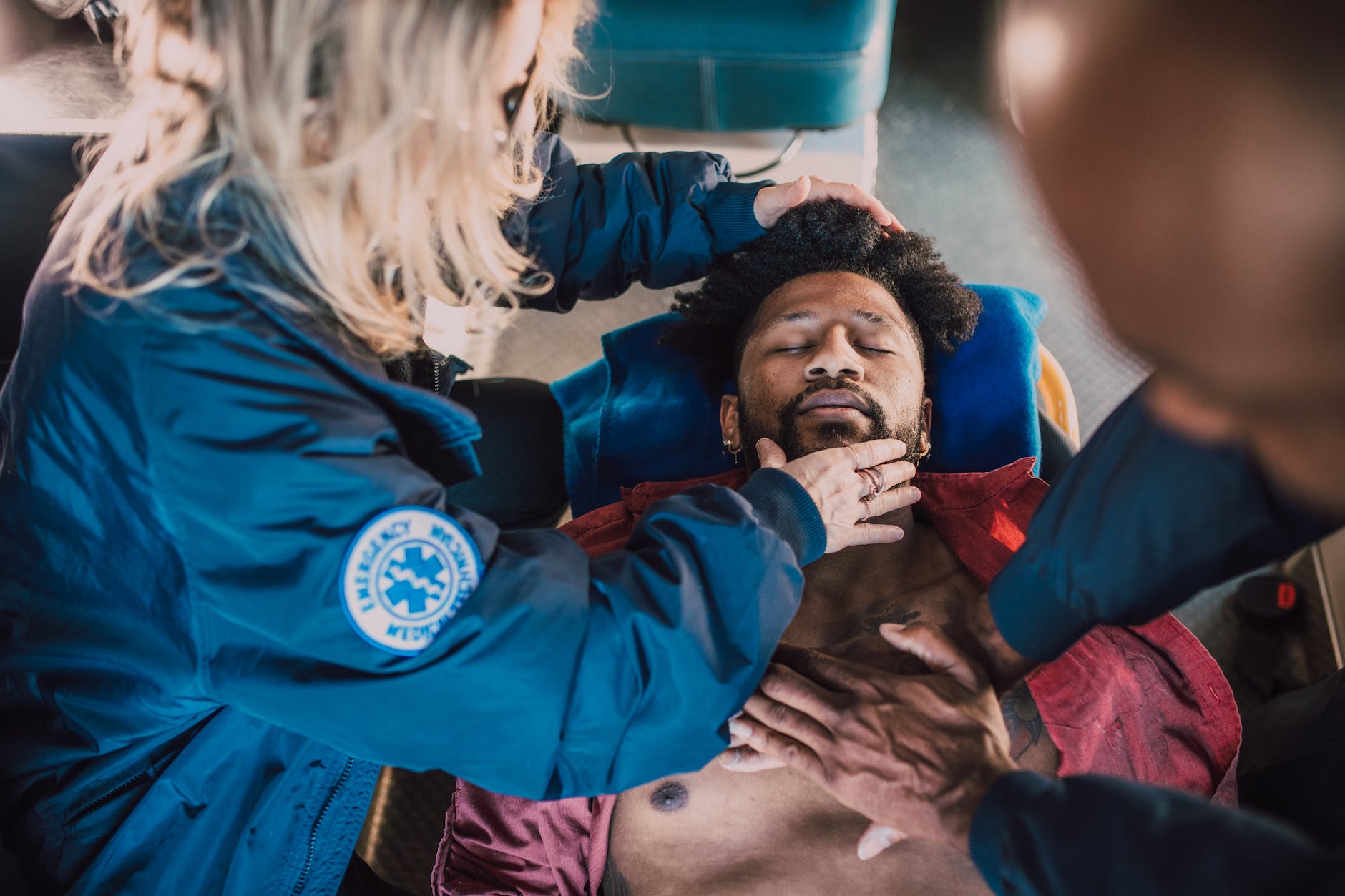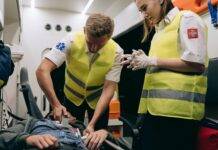
CPR Techniques: Saving Lives through Immediate Action
CPR Techniques : Cardiopulmonary Resuscitation (CPR) is a life-saving technique that combines chest compressions and rescue breaths to maintain blood circulation and provide oxygen to the body during a cardiac arrest. In emergency situations, knowing how to perform CPR can make the difference between life and death. This article delves into the essential CPR techniques, highlighting step-by-step instructions and crucial tips for performing effective CPR.
Cardiac arrest can strike unexpectedly, and knowing how to administer CPR promptly can significantly increase the chances of survival. When someone collapses and is unresponsive, it is crucial to take immediate action.
Understanding CPR: A Vital Skill for Everyone
CPR is an emergency procedure that aims to maintain blood flow and oxygenation in a person whose heart has stopped beating or is beating ineffectively. It involves rhythmic chest compressions to circulate blood and artificial breaths to ensure oxygen supply to the vital organs.
When to Perform CPR: Identifying Cardiac Arrest
CPR should be initiated if the person is unconscious and not breathing normally. It’s important to recognize the signs of cardiac arrest, such as the absence of a pulse and gasping for breath.
Step-by-Step Guide to CPR: Proper Execution
Assessing the Victim’s Responsiveness
Before starting CPR, gently shake the person and shout loudly to check if they respond. If they don’t, it’s time to act.
Activating Emergency Services
Call for help immediately or ask someone nearby to call for you. Emergency medical services are crucial during a cardiac arrest situation.
Initiating Chest Compressions
Position the person on their back on a firm surface. Place your hands on the center of the chest and push hard and fast, aiming for a compression depth of about 2 inches.
Delivering Rescue Breaths
Tilt the person’s head back slightly, lift the chin, and pinch the nose. Give two rescue breaths, each lasting about a second.
Importance of Proper Hand Placement
Correct hand placement ensures effective compressions. Interlock your fingers and keep your arms straight while pushing down on the chest.
Achieving Adequate Compression Depth and Rate
Maintain a compression rate of 100-120 compressions per minute and allow the chest to recoil completely between compressions.
Alternating Compressions and Breaths
Perform 30 chest compressions followed by two rescue breaths. Continue this cycle until help arrives or the person shows signs of life.
Tailoring CPR for Different Age Groups: Adults, Children, and Infants
CPR techniques vary based on the age of the victim. For adults, use both hands for compressions. For children, use one or two hands, and for infants, use two fingers.
Modifications in Technique
Adapt your technique for victims with certain conditions, such as pregnant women or individuals with underlying medical issues.
Adjusting Compression Depth and Rate
The compression depth and rate might differ for children and infants. Make sure to follow the recommended guidelines.
Utilizing Automated External Defibrillators (AEDs)
AEDs are devices that can deliver an electric shock to the heart to restore its normal rhythm.
How AEDs Work
AEDs analyze the heart’s rhythm and determine if a shock is necessary. They provide voice prompts to guide users through the process.
Integrating AED Use with CPR
If an AED is available, use it as soon as possible. Resume CPR immediately after using the AED if the person remains unresponsive.
Potential Risks and Precautions During CPR Administration
While CPR can save lives, it’s essential to be mindful of potential risks and take precautions to minimize harm.
Rib Fractures and Injuries
CPR can cause rib fractures, especially in elderly individuals. Focus on proper hand placement to reduce the risk.
Avoiding Excessive Force
Applying excessive force during compressions can lead to injuries. Maintain a balance between depth and force.
The Psychological Impact: Coping with Stressful Situations
Performing CPR in emergency situations can be emotionally challenging. Stay focused and seek support afterward if needed.
Staying Calm and Focused
Keeping a clear head is vital for effective CPR administration. Remember your training and focus on the task at hand.
Seeking Support
It’s normal to feel overwhelmed after performing CPR. Reach out to friends, family, or professionals for emotional support.
CPR Certification: Empowering Individuals to Act
Obtaining CPR certification equips individuals with the knowledge and confidence to respond effectively in emergency situations.
Importance of Training and Refreshers
Regularly refresh your CPR skills through training courses and updates to stay up-to-date with the latest techniques.
Online Resources and Courses
Numerous online resources and courses offer CPR training, making it accessible for people of all backgrounds.
Legal Aspects of CPR: Good Samaritan Laws
Good Samaritan laws protect individuals who provide reasonable assistance to those who are injured or in danger.
Protection for Bystanders Rendering Aid
Good Samaritan laws vary by jurisdiction but generally offer legal protection to those who offer aid in good faith.
The Power of Early Intervention: Improving Survival Rates
Early initiation of CPR significantly improves the chances of survival and reduces the risk of brain damage.
Myth Busters: Dispelling Common Misconceptions about CPR
Clarifying misconceptions about CPR, such as the effectiveness of coughing or self-administered CPR.
Teaching CPR in Schools: Fostering a Lifesaving Culture
Integrating CPR education into school curricula can have a lasting impact on society. By teaching students CPR techniques, schools empower the next generation to respond confidently in emergency situations.
Early Exposure to Lifesaving Skills
Teaching CPR to students exposes them to essential life-saving skills from a young age. This early exposure can help them develop a sense of responsibility and preparedness.
Creating Lifesavers
Educating students about CPR not only equips them with the knowledge but also instills a sense of duty to help others. These young individuals can become active participants in their communities, ready to assist during medical emergencies.
Keeping CPR Knowledge Updated: Staying Informed about the Latest Guidelines
CPR guidelines and techniques evolve over time as research and medical practices advance. It’s essential to stay informed about the latest updates to provide effective aid.
Regular Training Refreshers
Health organizations periodically update CPR guidelines to reflect the most effective practices. Individuals who have received CPR training should attend refresher courses to stay up-to-date.
Online Resources and Updates
The digital age has made it easier than ever to access updated CPR guidelines. Online platforms provide reliable information, videos, and interactive resources to enhance understanding.
Advocating for CPR Awareness: Spreading the Message
Promoting CPR awareness is crucial for creating a society that is well-prepared to respond in emergencies. Advocacy efforts can save lives by encouraging more people to learn CPR.
Community Workshops and Training
Organizing community workshops and training sessions can reach a wide audience and empower individuals with life-saving skills.
Social Media Campaigns
Using social media platforms to share CPR success stories, videos, and educational content can raise awareness and encourage more people to learn CPR.
Conclusion: Empowering Bystanders to Be Lifesavers
In critical situations, bystanders often find themselves as the first responders. Learning CPR can empower ordinary individuals to take immediate action, providing a crucial bridge until professional help arrives.
By mastering CPR techniques and understanding how to respond during cardiac emergencies, you have the power to make a significant difference in someone’s life. Being prepared and confident can mean the difference between life and death.
How to perform CPR step by step
Frequently Asked Questions
- Is CPR only for medical professionals? No, anyone can learn CPR. Basic knowledge of CPR is invaluable and can be performed by bystanders until professional help arrives.
- Can I cause harm while performing CPR? While CPR may cause minor injuries like rib fractures, the potential harm is outweighed by the potential to save a life.
- How do I find CPR training near me? You can search for local CPR training centers or consider online courses offered by reputable organizations.
- Are there age-specific CPR techniques? Yes, CPR techniques vary for adults, children, and infants. It’s essential to know the differences and adapt accordingly.
- Can I perform CPR on someone with a pulse? No, CPR is for individuals without a pulse or whose pulse is weak and irregular. For someone with a pulse, monitor and provide comfort
























